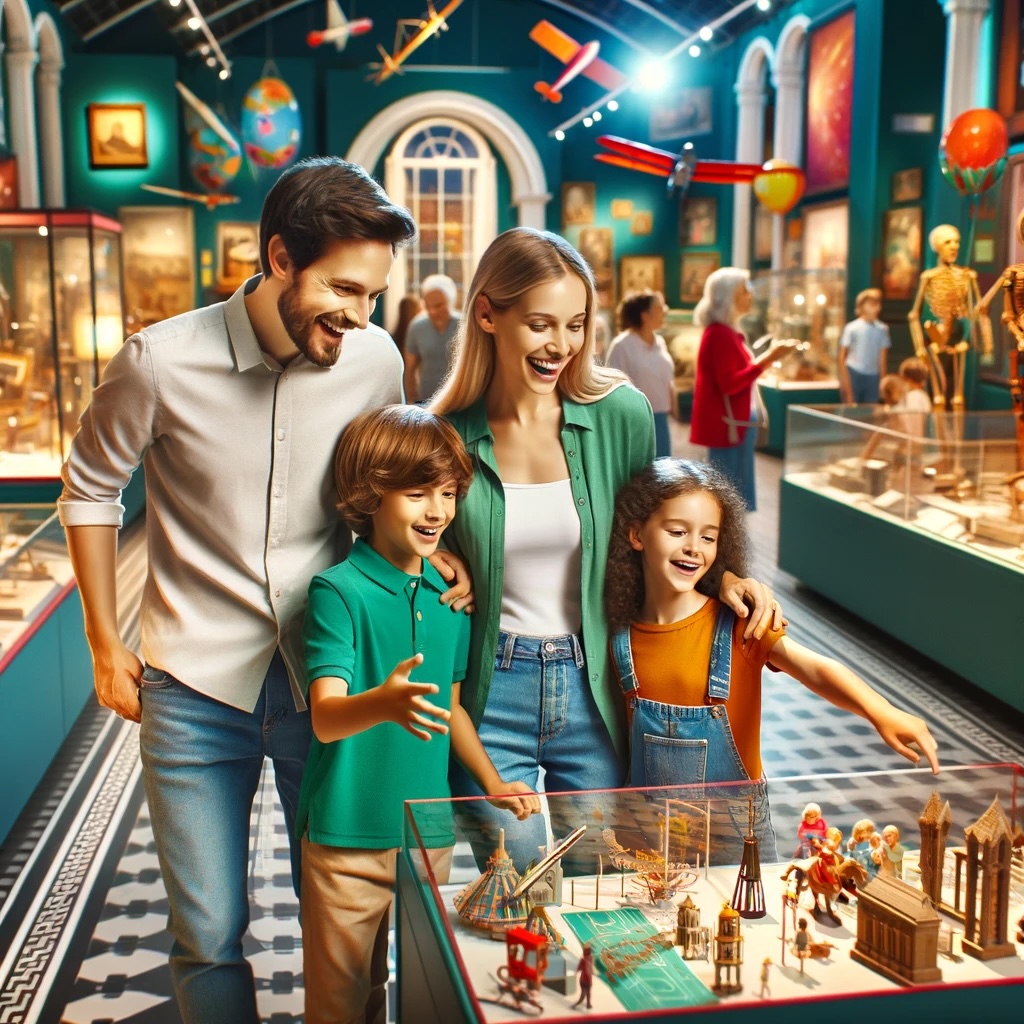Visiting a museum is like embarking on a thrilling time machine journey, allowing families to explore worlds from eras past and mysteries of human history, science, and art. For parents seeking a blend of education and entertainment, a family day at the museum presents a perfect opportunity. Not only do these adventures foster a love for learning among kids, but they also offer a unique way to strengthen family bonds through shared experiences. In this guide, we’ll explore how to transform a museum visit into an engaging and educational adventure that captivates the curiosity of children.
Choosing the Right Museum
Selecting a museum that resonates with your children’s interests and age group is key to a memorable family outing. Consider the diverse types of museums available – from history and science to art and technology. For younger kids, interactive museums with hands-on exhibits can be particularly engaging, as they offer tactile learning experiences. Older children might appreciate museums with more in-depth exhibits on specific historical events or scientific discoveries.
It’s also worth checking if the museum has special family or kid-friendly programs. These often include activities tailored to engage young minds, making the learning process fun and interactive. Before your visit, browse the museum’s website for information on current exhibits, age-appropriate activities, and any special events that might align with your family’s interests. This pre-planning ensures that your museum choice is a perfect fit for an educational and enjoyable family day out.
Pre-Visit Preparation
To maximize the museum experience, a little preparation can go a long way. Start by engaging your children’s curiosity before the visit. You can read books or watch documentaries related to the museum’s theme, or explore interactive websites that offer virtual tours or related educational content. This pre-visit engagement helps in setting the context and sparking interest in what they’re about to see.
Encourage your children to come up with questions or topics they’re curious about. This not only enhances their engagement but also gives them a sense of ownership over their learning experience. Also, prepare practically: consider the museum’s location, parking facilities, opening hours, and any need for advance ticket purchases. Check for facilities like cloakrooms, restrooms, and eating areas to ensure a comfortable visit. By addressing these logistical details, you can focus more on the educational and fun aspects of the trip.
Engaging Activities During the Visit
Once at the museum, transform the visit into an interactive adventure. Start with a scavenger hunt, a classic and effective way to engage children. Prepare a list of items or themes to find in different exhibits, turning the visit into a playful quest. Many museums also offer their own versions of scavenger hunts, often with educational themes tied to their exhibits.
Encourage your children to ask questions and initiate discussions about what they see. This can be about historical figures, scientific theories, or artistic techniques, depending on the museum’s focus. Such conversations not only deepen understanding but also allow children to see things from different perspectives.
Look out for hands-on exhibits and workshops often available in children’s museums or special family-friendly exhibits. These activities are designed to be interactive, allowing kids to learn through doing, which is a powerful educational method. Additionally, if the museum offers interactive digital experiences or augmented reality tours, make sure to participate. These modern approaches can significantly enhance the learning experience, making complex subjects more accessible and engaging for younger audiences.
Educational Aspects
Museums offer a rich educational platform, presenting history, science, art, and more in a tangible way. To turn the visit into a meaningful learning experience, connect the exhibits to topics your children are learning in school. For instance, a historical museum can complement their history lessons, while a science museum might echo their physics or biology classes.
Use the exhibits to explain complex concepts in a simplified manner. Museums often display information in a way that’s more relatable and easier to understand, especially for children. Encourage your kids to read plaques and information boards, and discuss these in a fun, interactive manner.
Also, encourage critical thinking by asking open-ended questions about the exhibits. For example, ask them how a particular historical event might have impacted today’s world or how a scientific discovery has changed our daily lives. This approach not only reinforces their learning but also helps in developing analytical skills.
Making the Most of Museum Resources
Museums are treasure troves of resources, and making good use of these can greatly enhance your family’s experience. Participate in guided tours, which are often led by knowledgeable staff who can provide insights not readily available from exhibit descriptions. These tours can be especially engaging for children, as guides frequently incorporate storytelling elements that bring exhibits to life.
Don’t overlook audio guides and educational materials available for rent or download. These resources often include child-friendly content, explaining complex themes in an accessible manner. Additionally, engaging with museum staff or educators can provide a deeper understanding of exhibits, making the experience more enriching for both you and your children.
Post-Visit Activities
After your museum visit, engaging in post-visit activities can help reinforce what your children learned. Encourage them to draw pictures or write stories about their favorite exhibits. This not only helps in solidifying their memories but also allows them to express their understanding creatively.
Discussing the visit over a family meal can be both fun and educational. Ask your children to share what fascinated them the most and why. Encourage them to think about how they could share their experience with their classmates or friends, perhaps through a show-and-tell or a small presentation. These activities ensure that the learning and excitement extend beyond the museum visit.
Conclusion
Museum visits offer a unique blend of education and adventure, making them an ideal family outing. By choosing the right museum, preparing beforehand, engaging interactively during the visit, and following up afterwards, you can turn a simple day out into a memorable and educational experience for your children. Happy exploring!
